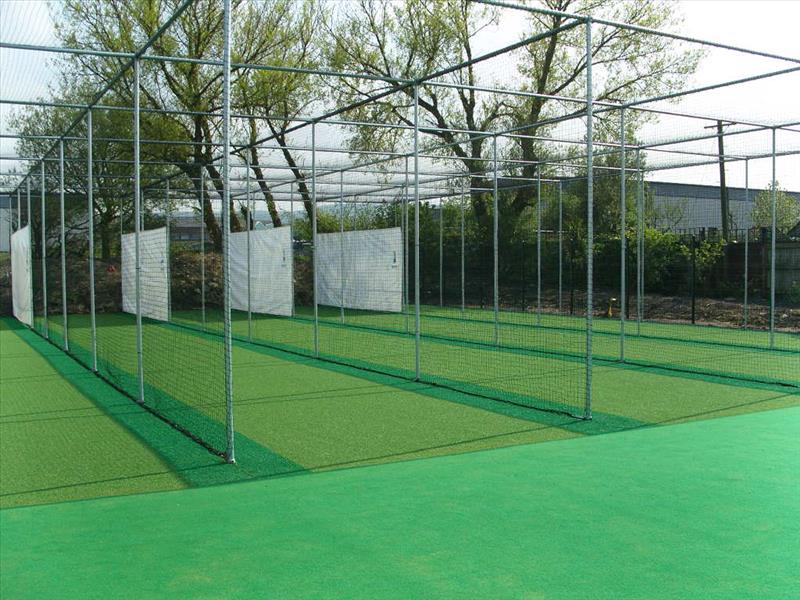Stamping Out Sticky Wickets
Stamping out sticky wickets: the significance of artificial turf pitches for amateur cricket
A very British game enjoyed across the globe, cricket is characterised by its high level of dependence on pitch properties for the quality of play. Whilst many amateur cricket clubs make use of synthetic sports surfaces you will rarely see a professional game played on anything other than natural turf. However, when you consider the impact of natural turf on the dynamics of the game it’s easy to understand why an artificial turf pitch is in fact the better choice for amateur clubs to achieve quality and consistency of training.
How does an artificial pitch affect the dynamics of cricket?
The rules of cricket specifically dictate the way in which the pitch is maintained and used. The bowler, for example, is prevented from running onto the protected inner area of the pitch. Foot scuffing in this area can affect the ball’s bounce and give an unfair advantage to the batsman’s team. Furthermore, the behaviour of a natural turf (or “green”) pitch actually causes the advantage to change during the game – unlike the static status of artificial field turf. Levels of moisture according to the weather directly affect the ball’s bounce-off, meaning that as the pitch dries out the ball’sbehaviour will change.
There are specific rules dictating the regularity and scheduling of watering, mowing and rolling green pitches – precisely because these activities will directly affect the way in which the game is played. Cricket pitch grass must be kept extremely short so regular mowing is essential. Clearly it would not be feasible for any amateur club to make the cost or time investment required to maintain these natural turf conditions. Hence choosing an artificial turf pitch ensures consistency of play over a long period of time with minimum cost to the sports pitch construction owner.
Which artificial turf pitches are most suitable for cricket?
The format of your artificial pitch depends on the level of play anticipated as well as the cost and maintenance factors for the club, school, or other sports pitch construction owners. The most common artificial turf pitch will be laid on a hard porous base which has distinct advantages for amateur enthusiasts. Behaving like an all-weather pitch by absorbing excess water in wet weather, this base also ensures consistent play throughout the game. The synthetic turf field is then laid on top of a shock resistant pad which protects the dynamic properties of the base, thus reducing maintenance requirements and maintaining quality of play.
For training venues focused on beginners there is also the option of laying a concrete base beneath the artificial turf pitch carpet. The dense concrete base maintains the same bounce in any conditions, making training more consistent as beginners get to grips with the skills of the game. The addition of a super-tough needlepunch artificial grass surface reduces maintenance costs to a bare minimum and gears the pitch up for tough punishment during beginner training sessions.
How do I maintain my artificial pitch for optimum cricket conditions?
The good news is that today’s state of the art artificial pitches require a low level of maintenance, making them an attractive option for those on a limited budget. Unlike professional green pitches they do not need to be mowed, regularly watered or rolled before a match. Advances in artificial sports turf have made synthetic fibres highly resistant to flattening – so the main areas you need to concentrate on are keeping your pitch clean, free from debris, and spraying for moss and weeds roughly twice a year. It’s simple and cost-effective to bring your artificial turf company in to perform these services so that you can sit back and enjoy your facility.
Don’t forget that if your club has additional facilities you will need to factor their maintenance into your budget as well. See our guide to maintaining your sports pitch construction for detailed advice on ensuring the good order of your synthetic sports surface, floodlighting and sports fencing.
Almost every sport these days can benefit from an artificial pitch due to their longevity, consistent playing properties, all weather resistance and easy maintenance. We think it unlikely that artificial turf pitches will become a significant player in professional cricket any time soon. But for an amateur club there’s no better choice to get the most out of your budget – and your game.

 01621 85 86 86
01621 85 86 86 


 Sports - Cricket
Sports - Cricket
Share this page!